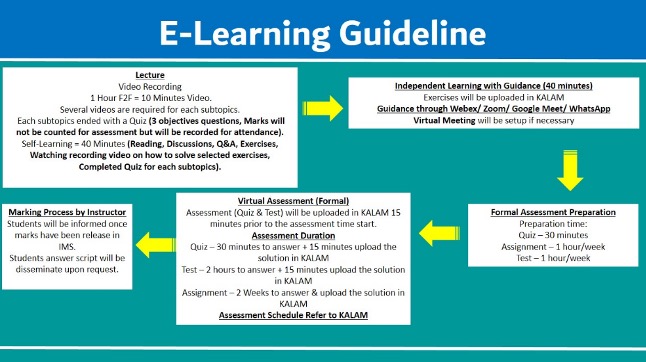
Introduction
Disclaimer: the views, thoughts, and opinions expressed in the text belong solely to the author, and not necessarily to the author's employer, organization, committee or other group or individual

Course Introduction
Online Teaching & Learning Plan

Technology Used
Online Teaching & Learning videos were recorded using Screencast-O-Matic or whiteboard and digital camera depending on the topics of the lecture. Screencast-O-Matic software also has been used to record step by step of the 3-dimensional system drawing and polar curve using online software of geogebra and desmos. The handwriting part to show the theory and step by step of the example has been written on the laptop by using Veikk pen and tablet. Video editing is done by using Adobe Premier Pro 2020 and TV is used for clear visualization (display) of the edited video. I uploaded all videos in my own YouTube channel and all the materials such as notes, tutorial and etc were uploaded in KALAM according to the following weekly arrangement (example):

